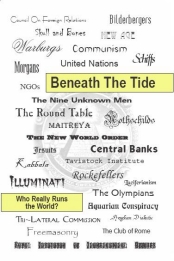Link to the 613 Commandments (Mitzvot) of Judaism
New article by Marlena on JewishJournal.com.
Why Would a Jew Become a Mormon?
http://www.jewishjournal.com/jews_and_mormons/item/
A Mormon's Guide to Judaism, People of The Book and Notes of a Jewish Convert to the LDS Church available on Kindle!! Download them to your phone and read anytime. They will help you understand one of the three seminal religions and cultures; the similarities and differences between Judaism and the LDS Church.
For more info: marlenatanya@gmail.com
Search This Blog
Biblical Roots of Judaism-Outline of Progress Series
Lineage of the Aaronic Priesthood
Chart of Tribal Lineage

Sometimes the tribes are listed genealogically (Gen. 35:23; I Chron. 2:1-2) sometimes in cultic formation (Num. 2-3; Deut. 27:12); and sometimes geographically (Num. 34:14-28; I Chron. 6:54 ff.; Ezek. 48:1 ff.). Usually twelve tribes are mentioned, but the identification of the tribes varies: in one Dinah is listed in place of Benjamin (Gen. 29-30), and in Chronicles both halves of the tribe of Manasseh are counted (I Chron. 2-3; 6:54-80). Some lists mention only ten tribes (Deut. 33:6 ff.; II Sam. 19:43); one gives eleven tribes (I King 11:31); and in Gen. 46:48 ff. there are thirteen. Gerald A. Larue, PhD.
Blog Archive
Ken Bowers - Champion of Freedom
 Hiding In Plain Sight - for Latter-day Saints
Hiding In Plain Sight - for Latter-day Saints Quotations on Liberty - a compilation of quotations from General Authorities of the LDS church, our Founding Fathers and other great men and women throughout history. Knowing what threatens our peace helps to keep the peace.
Quotations on Liberty - a compilation of quotations from General Authorities of the LDS church, our Founding Fathers and other great men and women throughout history. Knowing what threatens our peace helps to keep the peace.
The Gospel Dispensations
http://comeuntochrist.blogspot.com/
Visit Marlena's websites:
www.jewishconvert-lds.com
www.peopleofthebook-judaica.com
www.berdichev1941.com
Total Pageviews
Jewish Songs, Synagogue Slide Show - Haunting music
Marlena with Messianic Jews

Kippah - A Blessing On Your Head
_(english).jpg) It is perhaps the most instantly identifiable mark of a Jew.
It is perhaps the most instantly identifiable mark of a Jew.
In the Western world, it is customary to remove one's head covering when meeting an important person. In Judaism, putting on a head covering is a sign of respect.
The uniqueness of a Jewish head covering is hinted at in the blessing we say every morning, thanking God for "crowning Israel with splendor" (Talmud - Brachot 60b)
The kippah is a means to draw out one's inner sense of respect for God.
The Talmud says that the purpose of wearing a kippah is to remind us of God, who is the Higher Authority "above us" (Kiddushin 31a). External actions create internal awareness; wearing a symbolic, tangible "something above us" reinforces that idea that God is always watching. The kippah is a means to draw out one's inner sense of respect for God.
It's easy to remember God while at the synagogue or around the Shabbat table. But Jewish consciousness is meant to pervade all aspects of our lives ― how we treat others, how we conduct business, and how we look at the world.
Appropriately, the Yiddish word for head covering, "yarmulke," comes from the Aramaic, yira malka, which means "awe of the King."
In Hebrew, the head covering is called "kippah" ― literally "dome."
Making A Statement
To wear a kippah is to proclaim "I am a proud Jew." There is a fascinating phenomenon whereby non-observant Jews visiting Israel will wear a kippah for the duration of their stay. It may be out of a sense that the entire Land of Israel is holy like a synagogue. Or it may be the removal of any self-consciousness that can often accompany public expression of Jewishness in the diaspora.
Wearing a kippah makes one a Torah ambassador and reflects on all Jews.
Indeed, wearing a kippah is a big statement, and obligates the wearer to live up to a certain standard of behavior. A person has to think twice before cutting in line at the bank, or berating an incompetent waiter. Wearing a kippah makes one a Torah ambassador and reflects on all Jews. The actions of someone wearing a kippah can create a Kiddush Hashem (sanctification of God's name) or conversely a Chillul Hashem (desecration of His name).
Of course, putting on a kippah does not automatically confer "role model" status. Sometimes we unfortunately hear of a religious person caught in some indiscretion. I recall one time in Los Angeles, noticing that a drunken, disheveled man was walking down the street ― wearing a kippah! He wasn't Jewish, but he'd found an old kippah and thought it helped him fit in with the neighborhood atmosphere. For me, it drove home the idea that it's not fair to "judge Judaism" based on someone displaying the outer trappings of observance.
When To Wear A Kippah?
From a biblical standpoint, only the Kohanim serving in the Temple were required to cover their heads (see Exodus 28:4). Yet for many centuries, the obligatory custom has been for Jewish men to wear a kippah all the time, as the Code of Jewish Law says, "It is forbidden to walk four cubits without a head covering."
Does a kippah have to be worn while playing sports? This issue came to the fore recently with the publicity surrounding Tamir Goodman, the basketball sensation who is an observant Jew.
The answer is that it is preferable to wear even a small kippah, pinned to the hair. (Velcro works great!) If it is impossible because of the game conditions or rules, it is okay to play without a kippah.
When bathing or swimming, one does not wear a kippah.
Certainly, a head covering is obligatory while engaged in prayer and Torah study.
What kind of head covering qualifies? Basically anything ― including a baseball cap or a scarf tied around one's head. Of course, in the synagogue, it is more respectful to use a regular kippah.
A kippah should be large enough to be seen from all sides.
How large must a kippah be? Rabbi Moshe Feinstein states that the minimum measure is that "which would be called a head covering." Rabbi Ovadiah Yosef says the kippah should be large enough to be seen from all sides.
The style of kippah worn can reflect an interesting sociological phenomena, often denoting a person's group affiliation. For example, yeshivah-style Jews wear a black velvet kippah. Modern Orthodox Jews often wear a knitted, colored kippah. Many Chassidic Jews wear a fur hat (shtreimel) on Shabbat and holidays.
Additionally, many also wear a hat when they pray to increase awareness of the Almighty as they stand before Him. (Mishne Brura 183:11)
Rabbi Shraga Simmons, www.aish.com
Biblical Hebrew Names: by Index or Category
Check this out. Can be very helpful in learning Old Testament names and meanings in history.
http://www.bible-name.com/Hebrew-Names-Letter-74.htm
Shabbat Menorah

Friday night worship
Moses Delivers The Law Into Hands of Priests



No comments:
Post a Comment